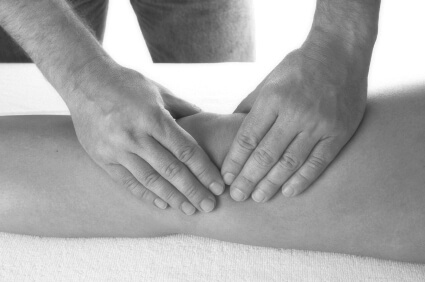How Active Release Techniques (A.R.T.) Can Resolve Common Sports Injuries

Are you an avid runner, cyclist, golfer, or tennis player who has reduced their activity load simply because of uncomfortable pain that won’t subside? If so, you are not alone, as millions of fitness enthusiasts suffer from similar conditions as a result of repetitive stress injuries such as tennis elbow or chronic muscle pulls. The cumulative effects of a repetitive motion caused by running, hitting a tennis racquet, or swinging a golf club can fuel a chain of injuries. Subsequently the body goes through repair cycles that can cause significant pain if not treated accordingly. For instance, once a muscle and/or fascia tears, causing immediate inflammation and pain, the body will automatically send healing collaborators such as white blood cells and fibrinogen to the site and start the adhering repair process. These adhesions start to cumulate each time the injury/repair cycle is initiated and the muscles get tighter, eventually weaken, and undermine performance and enjoyment. To help treat the issues caused by the cumulative impact of adhesions, Active Release Techniques, commonly known as A.R.T., was developed as a hands-on soft tissue technique that is used worldwide with professional athletes and recreational athletes alike. With over 500 protocols, A.R.T. can be applied not only to soft tissue injuries but nerve entrapments as well.
In a typical appointment (after a thorough examination is performed), A.R.T. will be applied to evaluate the texture, tightness, movement of specific muscles, tendons, ligaments, nerves and fascia. While trying to reproduce the same pain or tightness prior to treatment and then retesting after to assess the specificity of the treatment. The areas of concern such as tissue tension, texture, movement and function should all change during the course of treatments. A.R.T. protocols and treatments are different for everyone and are customized for every patient and situation.
If discomfort persists and a chronic injury is in play, A.RT. can help identify different muscles that may be driving pain or weakness in a more distant location. Once the underlying dysfunction is treated, the body can biomechanically function better and thus prevent further injuries. A.R.T. can be applied during any point of the injury process as it facilitates tissue healing.
One of the most commonly treated areas for A.R.T. therapy is knee pain. Knee pain can be along the medial aspect, behind the knee or along the lateral aspect. It can be hard to pinpoint exactly what is causing knee pain because there are over 20 muscles that directly connect and influence the knee. For the purpose of this example, imagine that the pain is along the back side and medial aspect of the knee and is brought on with stairs, lunging, and walking up an incline. Muscles that could be involved include the adductors, medial quadriceps, popliteus, gastrocnemius, and medial hamstring. If treatment is only done at the exact site of pain, the true root cause may be overlooked. The muscles tend to be facially bound together, especially along the medial and posterior aspect of the knee, thus they have an even stronger influence on the knee biomechanics. After applying several passes of the A.R.T. protocols to those various muscles, the knee pain is retested. Typically some improvement is noted right away. If not, different muscles are tested and treated. This allows the treatment to be very specific and uncover the true root cause of pain. With all that said, many times knee pain is a result of another source such as the lower back or hip. With A.R.T. the entire picture comes into play and is treated.
Other common injuries treated with A.R.T. include shoulder pain, frozen shoulder, golfer’s elbow, tennis elbow, carpal tunnel, sciatica, recurring muscle pulls, etc. For more information on Active Release Techniques and how it can help you, please call ProClinix at (914) 202-0700 or visit www.proclinix.com.

